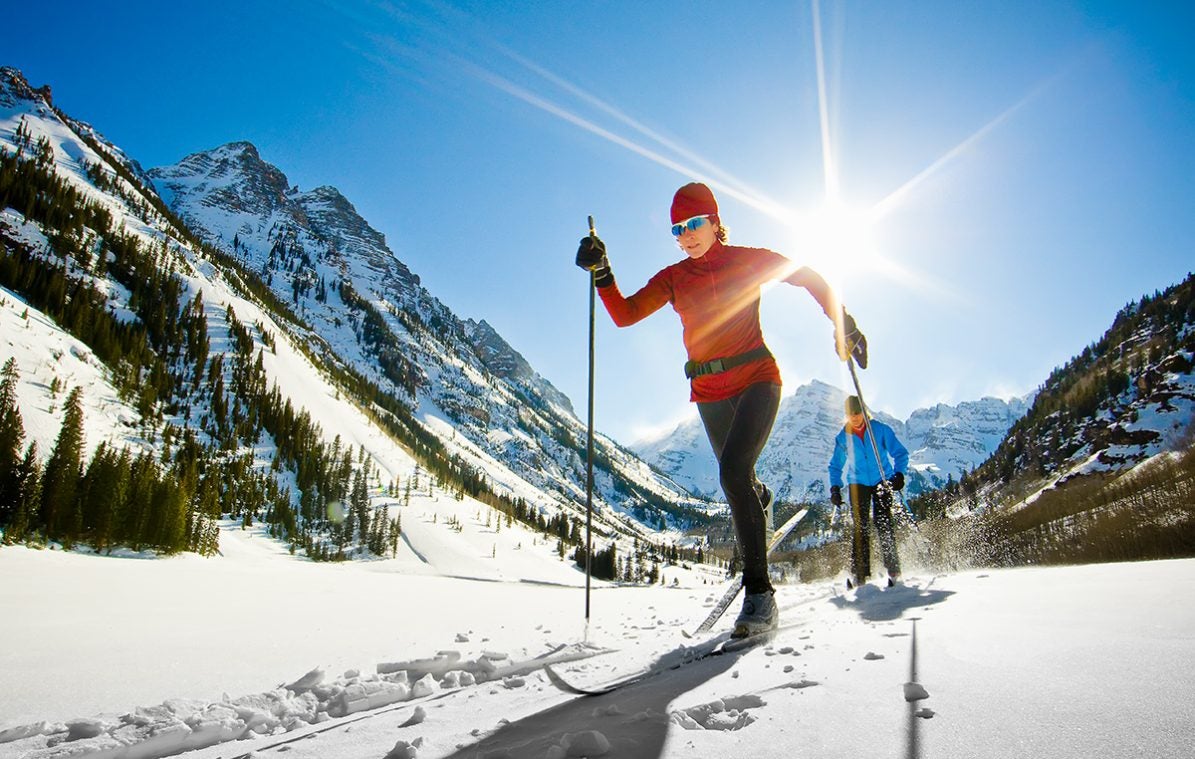5 Reasons Why You Should Ski In Spring
 ©Tyler Stableford
©Tyler Stableford
When spring begins, the ski season slowly draws to a close. But that’s no reason to just stow away your winter sports equipment in the basement. Because spring is the perfect time to conquer the ski slopes one last time. You’ve never been to the mountains? Then it’s time to go! Spring skiing has a lot of health and fitness benefits, and they last far into the spring. Plus there’s even more amazing winter sports to keep you fit during the cold season!
The best thing is: there are fewer people on the mountain slopes in spring than in the high season in winter. The days are also longer and the spring snow is ideal for smooth descents. This soft snowpack is especially good for beginners.
So what are you waiting for? The mountain is calling! Grab your skis or book a beginner’s course at a ski resort you’ve always wanted to go to. The great thing is that, in the off-season, you can look forward to not only empty slopes but also bargain prices! Still not convinced? Here are our top five reasons to go skiing in the spring:
#1 Skiing strengthens your cardiovascular system
Skiing is the perfect sport for working on your fitness and strengthening your cardiovascular system. How intense the workout is depends on your skiing style: Depending on whether you choose flat, sweeping mountain slopes, moguls, or slalom runs, your heart rate will shoot up to different levels. The mountain air does the rest: a study from the University of Cologne confirms that spending time at medium altitudes, so between 1000 and 3000 meters above sea level, can have a positive effect on your heart, circulatory, and lung function. One thing is certain: After a skiing vacation, you won’t get out of breath as quickly back in your everyday life.
For more on this topic: check out our article on endurance training.
#2 No other sport strengthens your legs and glutes as much
Carving, swinging, sliding, jumping: The movement sequences in skiing are all about the lower body. That’s why it’s a workout for all your leg and glute muscles. It involves eccentric, concentric, and isometric muscle training. This means you have to overcome resistance, counteract it, and maintain tension. This makes strength training on the slopes extremely effective and leaves many other comparable sports far behind. At the same time, skills in coordination are also required. This mix makes skiing the perfect training session for a strong lower body.
After the load, your muscles deserve a break: provide them with all the important nutrients that stimulate rapid regeneration and growth. Optimal companions for your next trip to the ski slopes are, for example, our Recovery Aminos and our popular Whey Protein*.
#3 Skiing works on your balance
Anyone who has ever stood on skis knows how wobbly they can be. On the slopes, you have to continuously shift your weight in order to glide down the slope in a controlled manner. This means that it’s not only your leg and glute muscles that work hard, but also your core. That’s why skiing is an effective way to work on your balance and helps you build up a good sense of your body, as well as a healthy posture.
Find out more in our article about balance training and its benefits, including some exercises that can prepare you for the slopes.
#4 Skiing is the perfect interval workout
Interval training is extremely popular for burning fat quickly, strengthening your muscles, and increasing your overall performance. High-intensity phases are followed by short breaks. Alternating between full power and recovery phases is supposed to boost fat metabolism and initiate the afterburn effect. And that’s exactly what happens when you’re skiing: The downhill runs force you to perform at 100% of your capacity, and then, during the lift ride back up to the starting point, you get to take a short break before heading downhill again. That’s why it’s easy to burn 400 to 500 calories per hour with skiing.
Read more here: How fast can you master our new extreme HIIT workout?
#5 Spring skiing is a great way to recharge
Another great thing about skiing in spring is that the days are longer, and the sun has more power. Spending time on the slopes naturally balances out your vitamin D levels while your body releases lots of happy hormones. Within just a few days, you can refill the reserves depleted over the winter. Bye-bye, winter blues!
If the sun is still in hiding, support your body with our Daily Vitamins – they’ve got 100% of your daily vitamin D needs covered!
More healthy living tips from foodspring:
- Surprising Benefits of Rock Climbing
- Pick up a sports habit! We’ll show you how
- 33 Types of Sports – And Which Is Best for You
- Our 5 Best Ways to Get Fit While Having Fun
- 8 Tried-and-True Motivational Tools to Make it Through Winter
* Protein contributes to muscle growth and retention.
Sources for this article
We at foodspring use only high-quality sources, including peer-reviewed studies, to support the facts within our articles. Read our editorial policy to learn more about how we fact-check and keep our content accurate, reliable, and trustworthy.






















